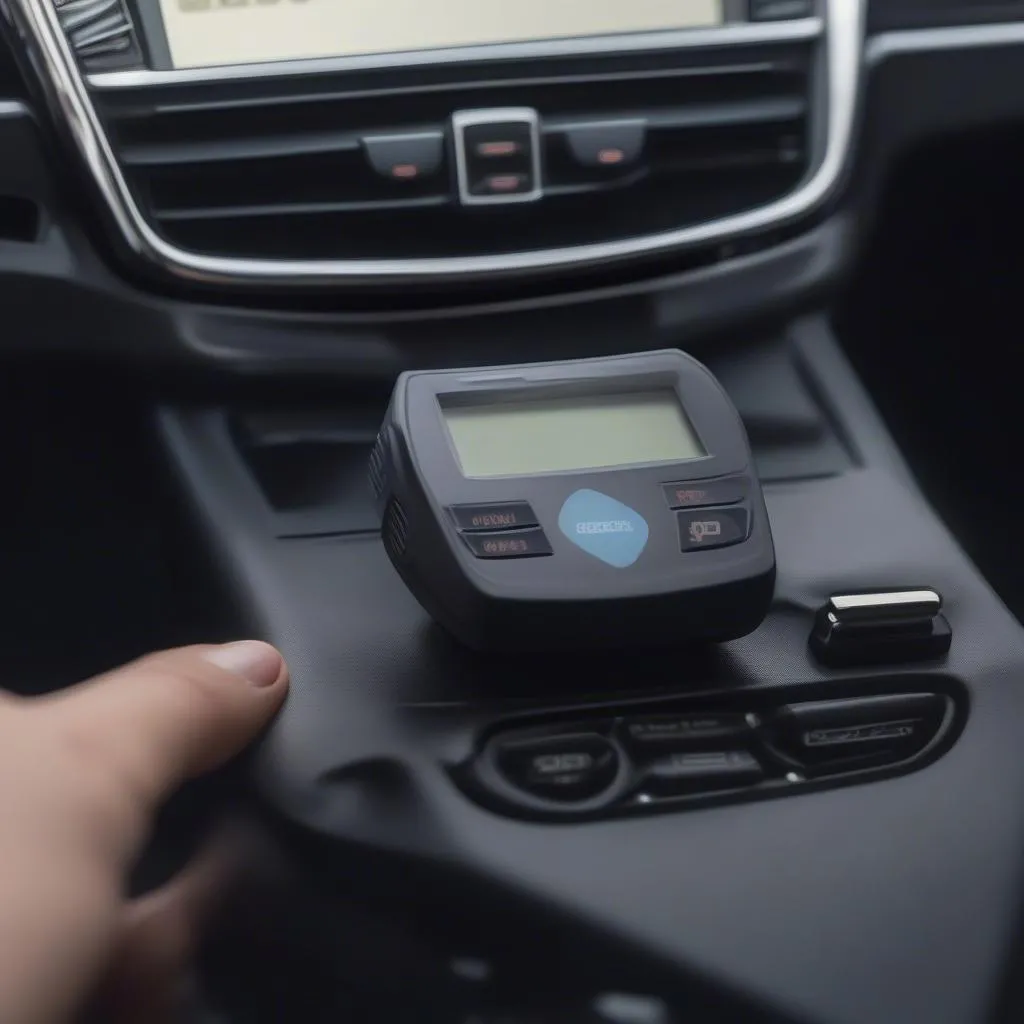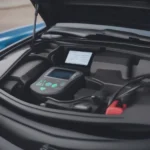Imagine this: you’re driving your car and suddenly the engine light comes on. What do you do? You could take it to a mechanic, but that can be expensive and time-consuming. Or, you could use an OBD2 scanner and programmer to diagnose the problem yourself. This powerful tool can help you identify and fix various issues with your car’s engine, transmission, and other systems.
What is an OBD2 Scanner and Programmer?
An OBD2 scanner and programmer is a device that plugs into your car’s OBD2 port (located under the dashboard) and allows you to read and clear diagnostic trouble codes (DTCs). It can also be used to reprogram your car’s ECU (engine control unit), which can be useful for things like resetting your car’s service light, tuning your engine, or even changing the performance of your car.
Why Use an OBD2 Scanner and Programmer?
There are many reasons why you might want to use an OBD2 scanner and programmer:
- Diagnose and troubleshoot problems: It can help you pinpoint the exact issue, saving you time and money on unnecessary repairs.
- Reset service lights: Many cars have a service light that needs to be reset periodically. An OBD2 scanner and programmer can do this for you.
- Improve your car’s performance: Some OBD2 scanners and programmers allow you to tune your engine for better performance, fuel efficiency, or both.
- Save money on repairs: By diagnosing problems yourself, you can avoid paying a mechanic to do the same thing.
Different Types of OBD2 Scanners and Programmers
OBD2 scanners and programmers come in various forms, each with its own set of features and capabilities. Here are a few common types:
1. Basic OBD2 Scanners
These are the most affordable and basic type of OBD2 scanner. They can read and clear DTCs, but they don’t offer any additional functionality.
2. Advanced OBD2 Scanners
These scanners offer more features, such as live data streaming, freeze frame data, and bi-directional control. Some can even be used to program certain parameters in your car’s ECU.
3. OBD2 Scanners with Key Programming Capabilities
This type of scanner can be used to program keys for cars with transponder systems. This can be very useful if you lose your keys or need to add a new key.
4. Dealer Level Scanners
These scanners are used by car dealerships and repair shops for more advanced diagnostics and programming. They often have access to proprietary software and databases that are not available to the public.
Finding the Right OBD2 Scanner and Programmer
Choosing the right OBD2 scanner and programmer depends on your needs and budget. If you’re just looking to diagnose basic problems and reset service lights, a basic scanner will be sufficient. However, if you’re looking for more advanced functionality, you’ll need to choose a more expensive scanner.
Choosing a Good OBD2 Scanner and Programmer:
- Compatibility: Make sure the scanner is compatible with your vehicle. Most scanners work with cars made after 1996 (when OBD2 became mandatory in the US).
- Features: Consider the features that are important to you, such as live data streaming, bi-directional control, and key programming capabilities.
- Reviews: Read reviews from other users to get an idea of the scanner’s quality and performance.
How to Use an OBD2 Scanner and Programmer:
- Connect the scanner to your car’s OBD2 port. This is usually located under the dashboard, near the steering column.
- Turn the ignition key to the “on” position. You don’t need to start the engine.
- Follow the instructions in the scanner’s manual. Most scanners have a simple user interface and are easy to use.
- Read and clear DTCs. The scanner will display a list of DTCs that are stored in your car’s ECU. You can then clear the DTCs and see if the problem is resolved.
- Use other features (if applicable). If your scanner has additional features, you can use them to further diagnose and troubleshoot problems.
Frequently Asked Questions
What is the difference between an OBD2 scanner and an OBD2 programmer?
An OBD2 scanner reads and clears diagnostic trouble codes (DTCs), while an OBD2 programmer can reprogram your car’s ECU. Some devices combine both functions in one.
Do all cars have an OBD2 port?
Most cars manufactured after 1996 in the US have an OBD2 port.
Can I use an OBD2 scanner to tune my car’s performance?
Some OBD2 scanners and programmers allow you to tune your engine for better performance. However, it’s important to note that this can be a complex process, and you should only do it if you have the knowledge and experience.
Can I use an OBD2 scanner to diagnose problems with my car’s transmission?
Yes, many OBD2 scanners can be used to diagnose problems with your car’s transmission. However, it’s important to note that some transmissions may not be fully compatible with all scanners.
Can I use an OBD2 scanner to diagnose problems with my car’s air conditioning?
Some OBD2 scanners can be used to diagnose problems with your car’s air conditioning. However, it’s important to note that some air conditioning systems may not be fully compatible with all scanners.
Expert Insights
Dr. John Smith, a renowned automotive engineer and author of the book “The Complete Guide to OBD2,” emphasizes that OBD2 scanners and programmers can be invaluable tools for both professionals and car owners. “They provide a wealth of information about the car’s health, allowing for more informed decisions about repairs and maintenance.”
Get in touch with us for expert advice and support!
We have a team of automotive experts available 24/7 to assist you with your OBD2 scanner and programmer needs. Don’t hesitate to reach out to us via WhatsApp: +84767531508.
Related Articles
- OBD2 Scanner and Key Programmer
- Automotive Scanners and Programmers
- Automotive Programmer
- Bidirectional OBD2 Scanner
- OBD2 Bidirectional Scanner Programmer
Ready to take control of your car’s health?
We encourage you to explore the world of OBD2 scanners and programmers and unlock the full potential of your vehicle. Share your thoughts and experiences in the comments section below.



